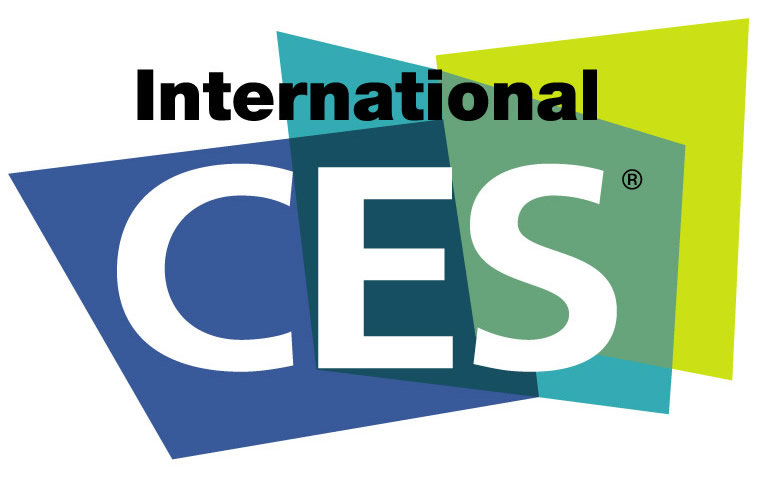aNewDomain.net — CES 2014. Let the battle for the last yard begin.
“The battle for the last mile” was the competition between broadband service providers to bridge the copper chasm between the Internet’s fiber backbone and the home. The prize was control over the spigot for the kind of services we are now seeing in homes today, most notably video on demand, photo sharing, and video calling.
But now, with the advent of the smartphone, there’s a good chance that your cell connection has as much bandwidth as your ISP. And now, the inefficiency of consulting your handset on the go has created a new gap to traverse — the distance between your phone and your face.
I call it the Battle for the Last Yard … and this is why head mounted display technology is important.
The number of text messages sent each month has quintupled in the last five years to more than 400B in June of 2013. Each time we receive one, we are forced to confront our tiny handset and to thumb out a reply on an even-smaller keyboard. The biomechanical complexity of this sequence of actions represents a major user-experience problem for cell phone handsets.
The task is a principal contributor to the $40B/yr distracted-driving problem in the United States. This problem has generated numerous soft and hard costs in hands-busy, eyes-busy activities.
Ultimately, voice synthesis is an ineffective proxy for the phone’s ability to convey visual information. We can’t accurately perceive a diagram, or efficiently search or scan databases, without a visual interface. We need to get this information out of our hands so that we can more-efficiently integrate our digital lives and our physical ones.
Enter: the head mounted display (HMD).
See-through head mounted displays (HMDs) offer a novel solution to this problem.
Originally developed for military pilots to more-efficiently monitor their instruments and target computers while flying, the technology has more-recently emerged in the consumer realm. The basic advantage of a head mounted display is that it permits the superimposition of digital data over the field of view of the wearer.
The result is there is no “perspective shift” required in order to look at your handset to see an incoming text, caller ID, speedometer reading, etc. With all of this information co-located in your field of view, you can expand your digital awareness without reducing your physical awareness.
Mobile augmented reality applications like Layar and Wikitude offer us a glimpse of this kind of functionality without giving us the experience of it. The real benefit, hands-free communication and location services, will require a head mounted display.
Maybe you’re wondering why don’t we have HMDs like the ones I describe already.
Good question.
The consumer HMD was defined for many years as a means of delivering a portable video experience. Companies like MyVu, Icuiti (now Vuzix), Colorado Micro Devices, Sensio and others lured travelers with the promise of a 100-inch home theater in your pocket.
While the optics could deliver such an experience, the substitute pressure of cheap and ubiquitous laptops proved to be sufficiently powerful that video glasses never really took off. It didn’t help that the lightest ones weighed around 4 ounces, and most people found them cumbersome to wear for any length of time.
Today, with the advent of ultra-miniature, high-brightness FLCOS microdisplays, it’s possible to build HMDs that are significantly lighter and brighter than just a few years ago.
This development alone has opened the door to creating see-through wearable displays that are light enough for a consumer to wear. And the sheer quantity of content available on the Internet, as facilitated by the smartphone and other mobile devices, means that real-time data is the new killer app for consumer HMDs.
Now let’s consider the growth path.
See-through head mounted displays are ideal for providing visuals when:
- The user is moving
- Multiple users need different views
- Screen privacy is required in a non-private environment
- The user needs a view customized to her surroundings
But see through HMDs are frequently not useful enough to displace cell phone, laptop, and tablet screens when:
- The user is seated and his hands and eyes are not busy
- The need is not sufficiently dire to require an HMD in the first place …
Even now the current crop of HMDs are still expensive and bulky compared to standard handsets. The price — anywhere from $500 to $1,500 — means that there’s got to be a compelling reason to own one, and a need for hands-free data that the HMD can properly satisfy.
Current see-through HMDs are essentially dashboards. They do not superimpose data on the world you see in front of you … rather they create a little data box on one corner of your field of view. The experience can be distracting for people who do not have an intense desire to remain connected.
For those of us who have a business need for this connectedness, though, we can begin to justify the minor inconvenience and cost of the device, because it pays for itself. For this reason, many of us expect that HMDs will see broad adoption in the commercial and industrial space before we see significant mass-market penetration.
For aNewDomain.net, I’m Jonathan Hoffberg.















[…] CES 2014: HMDs and the Battle for the Last Yard by Jonathan Hoffberg […]